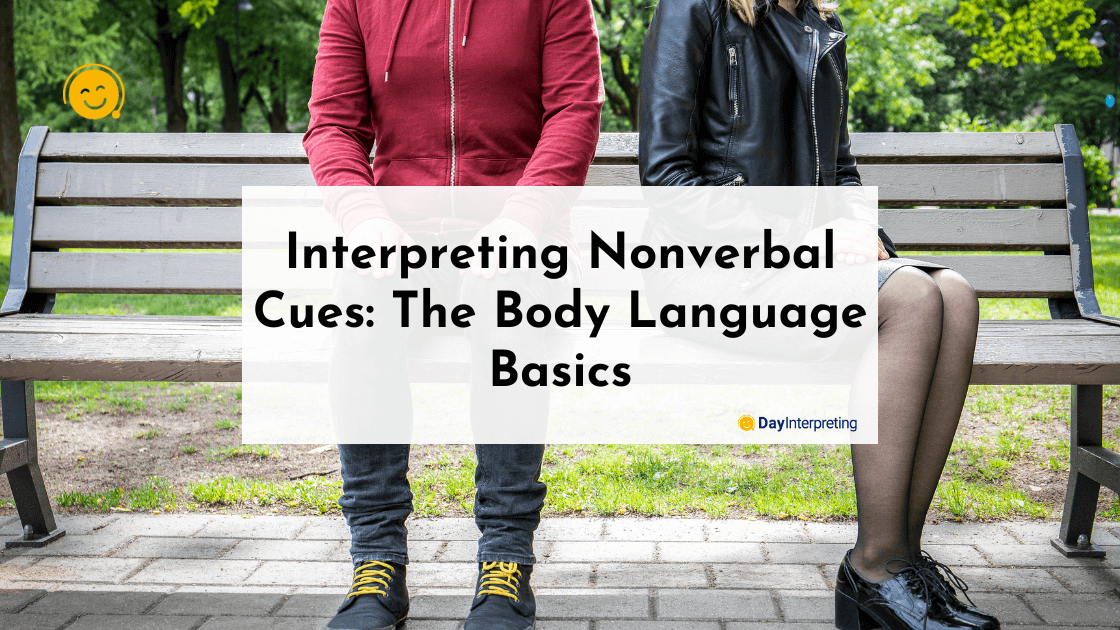They say actions speak louder than words, and actions often carry significant weight. When it comes to professional interpreting and bridging language barriers, which means it takes much more than foreign language fluency for interpreting nonverbal cues. Effective interpreting requires skillful body language, encompassing gestures, posture, and facial cues, to ensure seamless communication and avoid social blunders. Understanding the importance of body language is crucial when it comes to interpreting nonverbal cues.
What are Nonverbal Cues?
Body language encompasses the physical behaviors, expressions, and mannerisms that enable nonverbal communication, often occurring instinctively. While verbal communication is important, our nonverbal communication speaks the loudest. The gestures we make, the tone of our voice, and the level of eye contact we establish all convey powerful messages. They can either foster trust and understanding or cause offense and confusion.
Nonverbal communication is a natural and unconscious language that reveals our true feelings and intentions, making it a vital aspect of interpreting.
Why is Interpreting Nonverbal Cues so Important?
The significance of body language in interpreting cannot be overstated. How an interpreter listens, looks, moves, and reacts communicates their level of engagement in the conversation. Trust, clarity, and rapport are enhanced when their nonverbal communication skills align with their spoken words.
Several types of nonverbal communication hold particular importance in the field of interpreting:
Facial Expression
The human face is incredibly expressive. Facial expressions serve as a window into the speaker’s emotions. Interpreters consider the subtleties of smiles, frowns, raised eyebrows, eye contact, and other facial movements to gauge the speaker’s sentiment. For example, a smile accompanied by furrowed brows may indicate a polite gesture rather than genuine happiness.
Posture
Body posture provides valuable context for nonverbal behavior. Interpreters note how a speaker positions their body, whether they lean forward or backward, cross their arms, or maintain an open stance. These cues can reveal the speaker’s level of engagement, confidence, or even defensiveness, influencing the interpreter’s understanding and portrayal of the nonverbal messages.
Gestures
Gestures play a significant role in nonverbal signals, but their interpretation can vary across cultures. Interpreters possess cultural competence and awareness, allowing them to recognize and adapt to different gesture meanings. They consider the specific cultural context to accurately convey the intended message without causing misunderstandings or offense.
Tone
The tone of voice carries emotional nuances and emphasis. Interpreters listen attentively to variations in pitch, volume, and intonation, as these vocal cues contribute to the overall meaning and emphasis of the spoken words. These nonverbal signals can support or discredit verbal messages and also form part of a person’s emotional awareness levels. They strive to replicate the speaker’s tone, effectively conveying the words and the speaker’s intended emotional expression.
The Basics of Interpreting Nonverbal Cues
Interpreters possess a unique skill set that enables them to interpret nonverbal and verbal messages. They are adept at observing and analyzing the nonverbal communication cues of interaction, allowing them to capture the complete meaning and intention behind a message.
When interpreting nonverbal communication, interpreters pay close attention to nonverbal behaviors such as facial cues, body posture, gestures, and tone of voice. These cues provide valuable insights into the emotions, attitudes, and cultural nuances that underlie spoken words. By carefully observing these non-verbal signals, interpreters can accurately convey the intended meaning to the target audience.
Interpreters understand that nonverbal cues are essential for complete and accurate interpretation. By integrating these cues into their work, they can bridge the gap between different languages and cultures, ensuring that the nuances and intentions of the original message are faithfully conveyed.
Their expertise lies in understanding the subtleties of facial cues, body posture, gestures, and tone of voice, enabling them to capture the full meaning and intent behind spoken words. By considering both verbal and nonverbal communication, interpreters excel at conveying messages accurately and facilitating effective cross-cultural communication.
Wrapping Up
In conclusion, being aware of how your body language can inadvertently cause confusion or offense is essential. Body language can make the difference between a successful interpretation and a muddled communication. To avoid getting lost in translation, it is crucial to enlist the services of professional interpreters or seek further information about our comprehensive range of language services at Day Interpreting. Contact us today to ensure effective and accurate communication across languages.





0 Comments